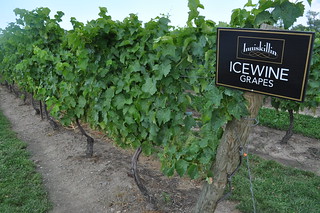
Climate change is unraveling the fabric of traditional wine and icewine production, confronting vineyards with unprecedented challenges.

As the tendrils of global warming extend across Canada, the impact is felt deeply in the vine-laden valleys where the production of these cherished beverages is becoming a race against time and temperature.

Once the dominant player in icewine, with its wintry conditions offering the perfect stage, Canada’s hold is now slipping.

The climate narrative speaks of fewer days with the necessary bone-chilling temperatures, a concerning trend for the $6.8 billion industry.

The shift is stark – the golden days of late December harvests in the Okanagan Valley are now a rare event, with drops of 97 to 99% in grape and wine production due to a devastating cold snap in January 2024, leading to projected revenue losses between $440 to $445 million over the next few years.

In this warming world, the viticulture industry faces the colossal task of adaptation or extinction. European counterparts have already experienced the bitter taste of this reality, with ice wine production plummeting due to warmer winters.

Jamie Slingerland of Pillitteri Estates Winery, fears a parallel fate for Canada, despite building an inventory to buffer against weather-induced losses.

But adaptation is in the air. Icewine producers are turning to mechanical harvesters as manual picking becomes unsustainable due to the shrinking windows of cold.

New wine regions emerge further north, while vineyards diversify their grape varieties to include those formerly unsuited to the changing climate.

The dilemma isn’t limited to icewine. Winegrowers, navigating a path through the volatility of shifting seasons, watch as their grapevines become more vulnerable to freeze damage.

Advanced technology, like precision viticulture tools and AI, offer a glimmer of hope, providing insights into vineyard management and grape quality.

Governments, too, are stepping up, with Canada’s federal government injecting $177 million to support the wine sector’s transition to sustainability.

Grapevines are commonly grown in regions highly susceptible to climate changes, with global warming being the primary challenge for the wine industry, but not the sole one.

Over the past 20 years, there has been a notable decline in wine consumption due to evolving lifestyles, increased prices, and health worries leading consumers, especially the youth, to reduce their alcohol intake.

Those who do enjoy wine are now more inclined to invest in higher-priced bottles, prioritizing quality over quantity.
Relevant articles:
– Comment: What climate change means for Canada’s wine industry, Vancouver Sun
– Glass half empty? What climate change means for Canada’s wine industry, Yahoo
– Climate change impacts and adaptations of wine production, nature.com
– Climate Change and Canada’s Icewine Industry, Wine Enthusiast
